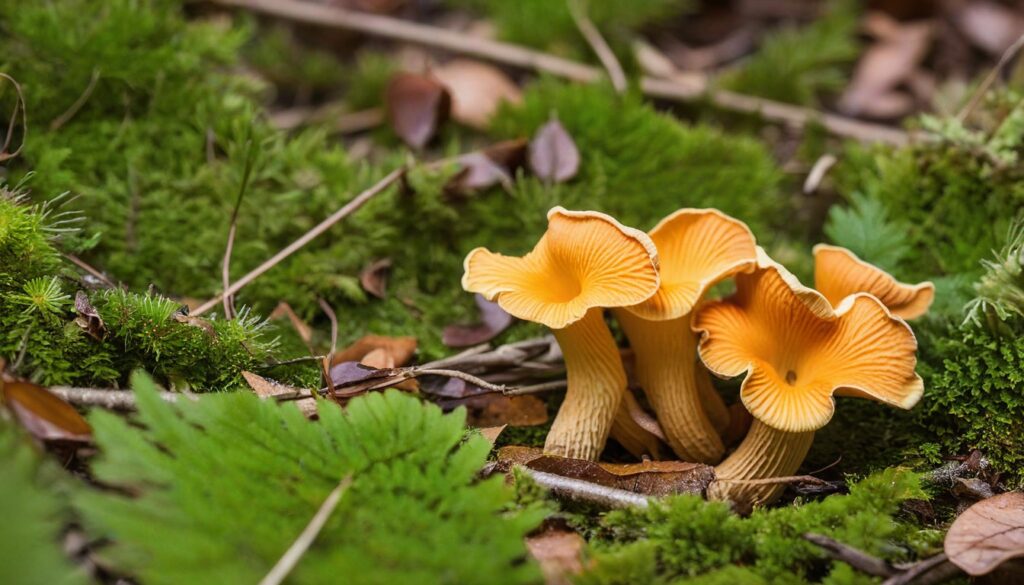Montana’s vast forests boast an abundance of wild mushrooms, but few are as highly sought after as Chanterelle mushrooms. These golden beauties are flourishing in the state’s damp soil, injecting both a unique flavor and nutritional value to your culinary repertoire. Foraging for Chanterelle mushrooms in Montana can be a thrilling and rewarding adventure, but it takes knowledge, patience, and respect for the environment. In this article, we’ll guide you through the ins and outs of foraging Chanterelle mushrooms in Montana, from where to find them to when and how to cook them.
Key Takeaways
- Montana offers a wealth of opportunity for foraging Chanterelle mushrooms
- Chanterelle mushrooms are distinctive in appearance and flavor, making them a favorite culinary ingredient
- Foraging tips include identifying and locating ideal habitats for Chanterelle mushrooms
- Proper foraging techniques and tools are essential for responsible harvesting and conservation
- Knowing how to clean, store, and cook Chanterelle mushrooms enhances the experience and taste
Chanterelle Mushroom Basics
Chanterelle mushrooms are a beloved delicacy among foragers, highly sought after for their rich, fruity aroma and meaty texture. These fungi have a trumpet-shaped cap with a wavy edge, and their color ranges from golden yellow to deep orange.
When it comes to flavor, Chanterelle mushrooms have a delicate, slightly sweet taste that pairs well with various dishes, including meats, pasta, and soups. Furthermore, they are a valuable source of nutrients, containing high levels of vitamin D, potassium, and fiber.
As with any wild food, it’s essential to be confident in your identification of Chanterelle mushrooms before consuming them. In the next section, we will provide detailed guidance on how to correctly identify these fungi.
Foraging for Chanterelle Mushrooms in Montana
Foraging for Chanterelle mushrooms in Montana is a thrilling pursuit that requires a keen eye and a bit of patience. These mushrooms thrive in the damp, cool forests of Montana, making them abundant in the region during the fall season.
When foraging, we recommend starting early in the morning and wearing comfortable shoes and clothing suitable for the uneven terrain. It’s also a good idea to bring a basket or a cloth bag to store the mushrooms instead of a plastic bag that can cause them to spoil.
Best Spots to Forage Chanterelle Mushrooms in Montana
The best spots to forage for Chanterelle mushrooms in Montana are in damp areas with plenty of moisture. Areas with lots of tree cover and sites that have been recently burned are prime spots to find these highly sought-after mushrooms. We also recommend checking out national forests such as the Flathead, Bitterroot, and Gallatin to increase your chances of a successful harvest.
Seasons for Foraging Chanterelle Mushrooms in Montana
The optimal time for foraging Chanterelle mushrooms in Montana is during the fall season, roughly from July through September. During this time, the temperatures are cooler, and the forests are lush with moisture, creating the perfect environment for these mushrooms to flourish.
“Foraging for Chanterelle mushrooms in Montana is one of the most rewarding experiences, but it’s important to have patience and respect for nature.
– Mary Johnson, Montana native and avid forager
Overall, foraging for Chanterelle mushrooms in Montana is an excellent way to connect with nature and enjoy a delicious treat. Just remember to always follow ethical and responsible foraging practices to ensure the preservation of these beautiful mushrooms for years to come.
Identifying Chanterelle Mushrooms
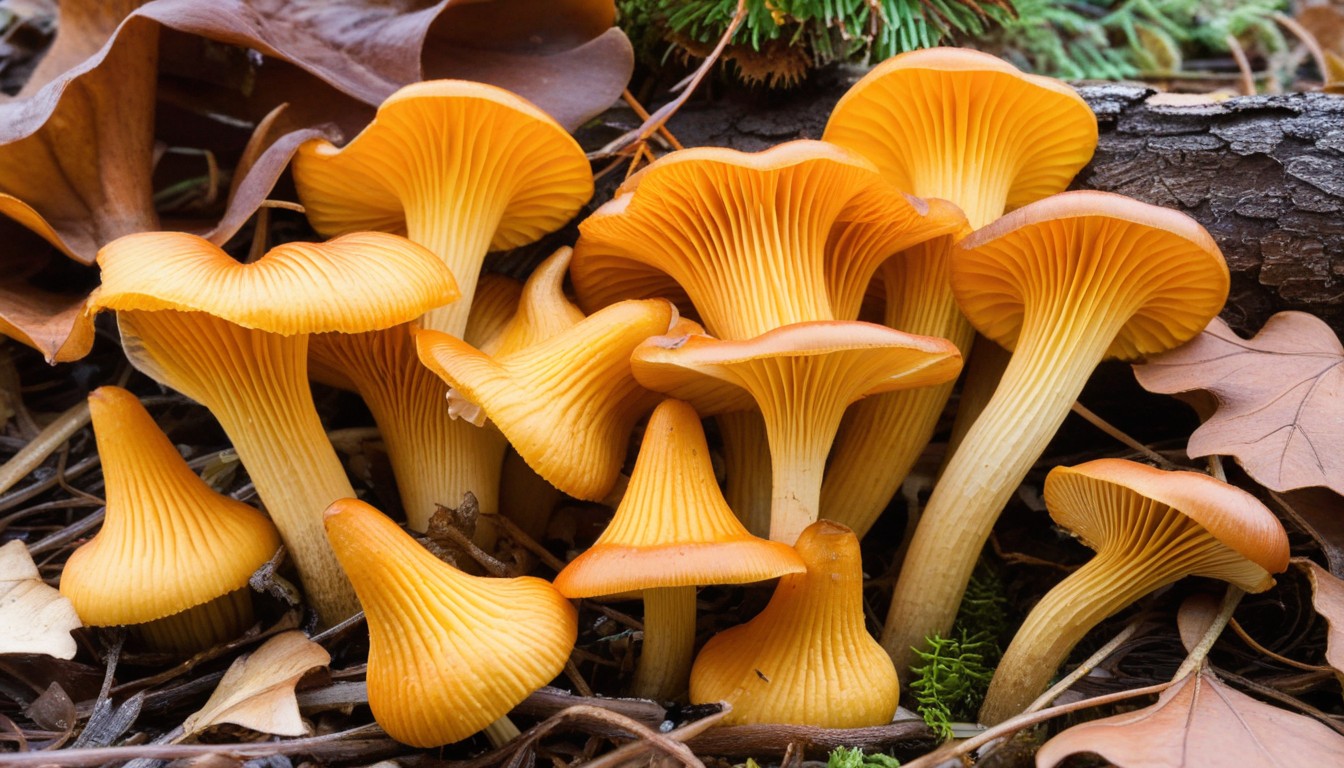
Identifying Chanterelle mushrooms can be a thrilling and fulfilling experience. However, knowing how to differentiate them from lookalikes is crucial for avoiding poisonous or inedible mushrooms. Here are some distinctive features to look for:
|
Characteristic |
Details |
|---|---|
|
Cap Shape |
The Chanterelle’s cap is usually funnel-shaped, with wavy, irregular edges and an overall convex appearance. |
|
Cap Texture |
Chanterelles display a dry, velvety texture, unlike the slimy or sticky texture of some lookalikes. |
|
Color |
The Chanterelle’s color varies from orange to yellow, with a slight peach tone. Avoid mushrooms with drastic color shifts or intense pigmentation. |
|
Gills or Ridges |
Chanterelles don’t have distinct, separated gills like some mushrooms do. Instead, they feature deep folds or ridges on the underside of the cap, which usually connect to the stem. |
|
Stem |
The Chanterelle’s stem has a fruity smell and a pale cream color. It is thick, firm, and fibrous, displaying an overall uniform texture and color. |
|
Lookalikes |
Beware of lookalikes such as the Jack-O-Lantern mushroom, which has sharp gills that don’t connect to the stem, or the False Chanterelle, which has a more vibrant orange color and a powdery texture. |
Remember, if you are not confident in your identification skills, always consult a reliable mushroom field guide or expert before consuming any wild mushrooms.
The Best Time to Forage Chanterelle Mushrooms
Foraging Chanterelle mushrooms in Montana is a seasonal affair, and the best time for harvesting varies depending on the weather conditions and the time of the year. The optimal time to go foraging for Chanterelle mushrooms is in late summer or early fall, typically from August to October. During this period, temperatures are mild, and the ground is damp, making it easier to spot the mushrooms among the foliage.
It’s important to note that the growth of Chanterelle mushrooms is heavily influenced by weather patterns, such as rainfall and temperature. During hot, dry spells, Chanterelle mushrooms tend to be scarce, and it might not be a good time to go foraging.
|
Season |
Best Time to Forage |
|---|---|
|
Summer |
July to August |
|
Fall |
September to October |
As shown in the table above, it’s worth noting that the optimal period for foraging depends on the month instead of the season. August is when the first flush is at its peak, but September and October can be just as fruitful, with larger fruiting bodies and fewer bugs.
In any case, it’s essential to keep an eye on the weather forecast, as rainy days can also be perfect for mushroom hunting. Heavy rains and mild temperatures create optimum conditions for Chanterelle mushrooms, leading to a surge in their growth.
Now that we have an idea of the best time to go foraging, let’s move forward to explore some of the best spots for finding Chanterelle mushrooms in Montana.
Finding Chanterelle Mushrooms in Montana
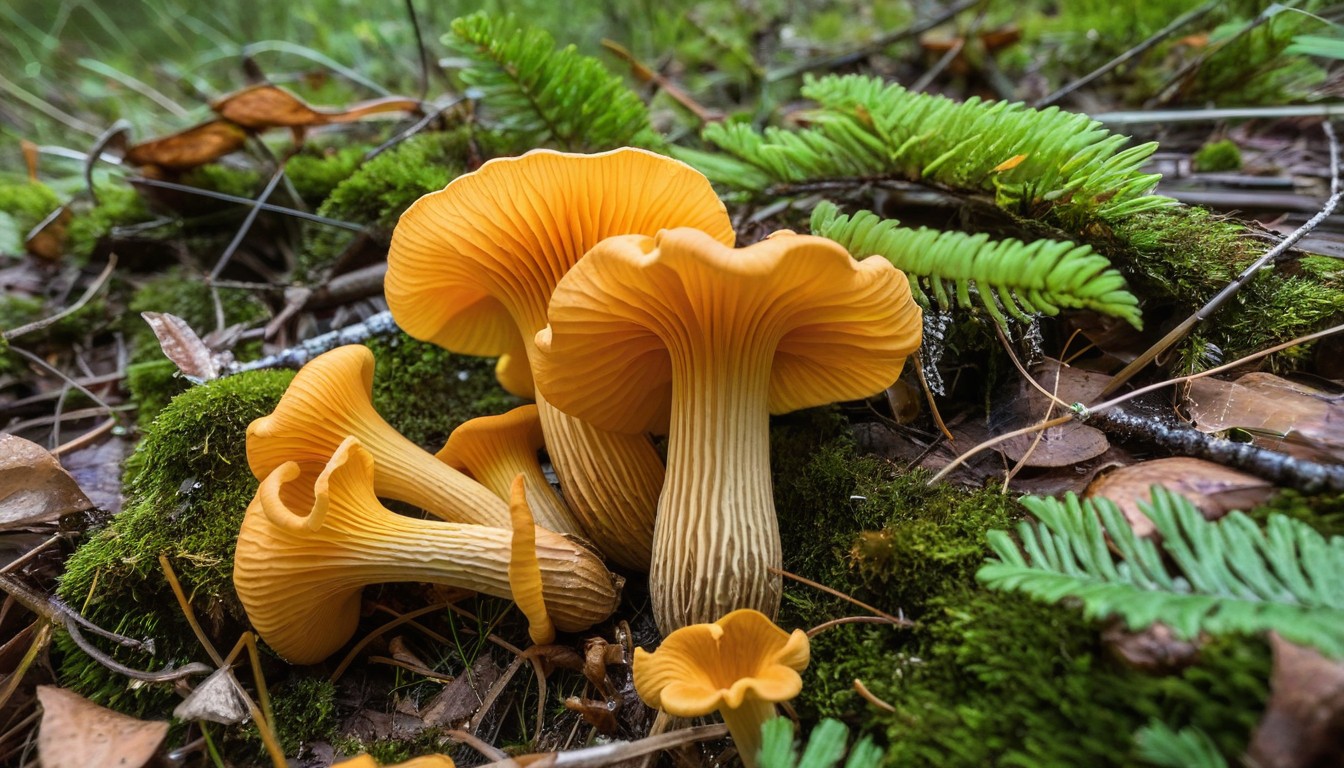
Mushroom foragers in Montana are in for a treat with bountiful harvests of Chanterelle mushrooms. The popular species, with its delightful taste and earthy aroma, can be found in various places across the state.
The best spots to find Chanterelle mushrooms in Montana are in moist, wooded areas that receive plenty of sunlight. Some great places to start the hunt include:
|
Location |
Features |
|---|---|
|
The Flathead National Forest |
Old-growth forests with a mix of fir, pine, and spruce trees |
|
The Bitterroot National Forest |
Moist, well-ventilated forests with hilly terrain |
|
The Lolo National Forest |
Coniferous forests with plenty of moss and understory plants |
Remember to get permission from the appropriate authorities before foraging in national parks, preserves, or private property. It’s also crucial to stick to established trails and avoid damaging the environment while foraging.
The best time to forage for Chanterelle mushrooms in Montana is from mid-June to August when the mushroom’s fruit bodies are at their peak. Keep an eye out for the telltale yellow-tinged, trumpet-shaped caps with wavy edges, protruding veins, and signature false gills. Chanterelle mushrooms, unlike most fungi, have a fruity, apricot-like scent that’s hard to miss.
When foraging in Montana, be sure to bring a basket, knife, and brush to collect and clean your mushrooms. These tools will not only help preserve the environment but also improve your chances of a bountiful harvest.
Happy hunting and remember to savor the flavors of your hard-earned Chanterelle mushrooms in your favorite recipes!
Tools and Equipment for Chanterelle Mushroom Foraging
For a successful Chanterelle mushroom foraging trip, it’s essential to equip yourself with the necessary tools and equipment. Here are some items to consider packing:
|
Tool/Equipment |
Description |
|---|---|
|
Basket |
A sturdy basket with handles to hold your harvest, allowing the spores to spread and grow more mushrooms in the future. |
|
Knife |
A sharp knife with a comfortable grip for cutting the base of the mushrooms without damaging them. Avoid dull knives that can crush the mushroom’s delicate stem. |
|
Brush |
A soft-bristled brush for brushing off dirt, leaves, and other debris that the mushrooms may collect while growing on the forest floor. |
|
Gloves |
Sturdy gloves to protect your hands from any sharp or thorny plants and to avoid direct contact with poisonous mushrooms. |
|
Map/Compass/GPS |
Knowing where you are and where you’re going is crucial for a successful foraging trip. Pack a map, compass, or GPS device to help you navigate the forest. |
These are just some of the fundamental tools and equipment for Chanterelle mushroom foraging. Be sure to tailor your packing list to your specific needs and preferences.
Harvesting Chanterelle Mushrooms Responsibly
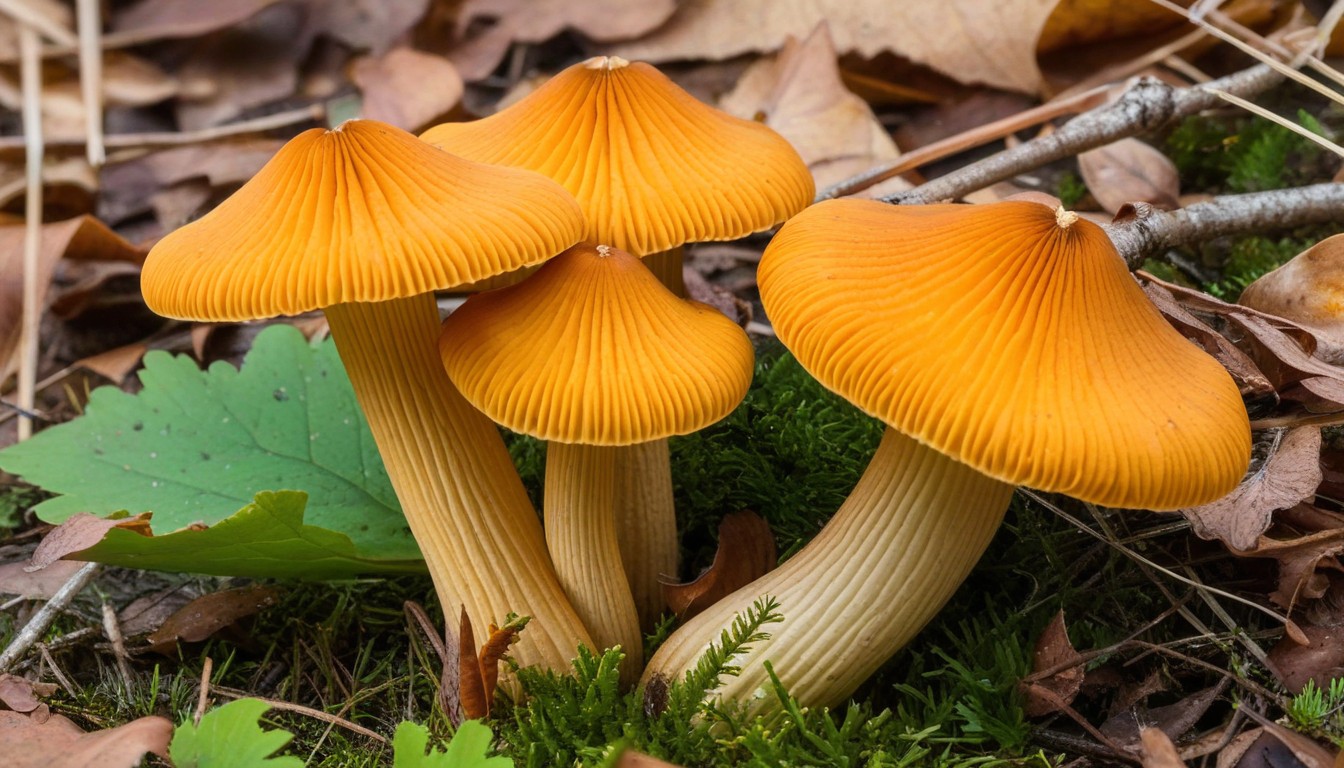
Foraging Chanterelle mushrooms can be a gratifying and sustainable hobby, but it’s also crucial to practice responsible foraging to preserve these delicate fungi. Here are some ethical considerations and best practices for harvesting Chanterelle mushrooms in Montana:
- Learn proper identification: Before heading out into the wilderness, make sure you can properly identify Chanterelle mushrooms to avoid accidentally harvesting a poisonous lookalike. Refer to reliable sources and use a field guide or smartphone app for guidance.
- Only harvest what you need: Take only the amount of Chanterelle mushrooms you need for personal use and avoid over-harvesting to ensure that the population can regenerate naturally.
- Respect the environment: When foraging for Chanterelle mushrooms, be mindful of your surroundings and try to minimize damage to the ecosystem. Avoid trampling plants and animals and leave the area as you found it.
- Use appropriate tools: Use a knife or scissors to carefully cut Chanterelle mushrooms from the base and avoid pulling them out of the ground, which can damage the mycelium and inhibit future growth.
- Don’t disturb wildlife: Be respectful of wildlife habitat when foraging for Chanterelle mushrooms and avoid disturbing animal dwellings or nests.
By following these responsible harvesting practices, you can help ensure the sustainability of Chanterelle mushrooms in Montana for future generations.
Cleaning and Storing Chanterelle Mushrooms
After you’ve unearthed your bounty of Chanterelle mushrooms, it’s time to get them cleaned and stored properly. Here are some essential tips to keep in mind:
- Clean them meticulously: Chanterelle mushrooms are delicate and require gentle cleaning. Begin by gently brushing off any dirt or debris with a soft-bristled brush or cloth. Avoid washing them, as they can absorb water and become slimy. If necessary, quickly rinse them under running water and pat them dry immediately.
- Trim the ends: check if the mushroom has any tough bits on the stem, and gently slice them off with a sharp knife.
- Store in a paper bag: transfer your cleaned mushrooms to a paper bag or a container lined with paper towels. Avoid using plastic bags, as they can trap moisture and cause the mushrooms to spoil faster. Keep them in the fridge, set to a low temperature to retain freshness for up to five days.
- Dry them for long-term storage: spread the mushrooms in a single layer on a baking sheet lined with parchment paper. Leave them in a warm, dry place for several days, until they have completely dried out. Store the dried mushrooms in an airtight container in a cool, dark cupboard for up to three months.
Properly cleaning and storing your Chanterelle mushrooms can help preserve their delicate flavor and texture, allowing you to enjoy them in an array of tasty dishes!
Cooking and Enjoying Chanterelle Mushrooms
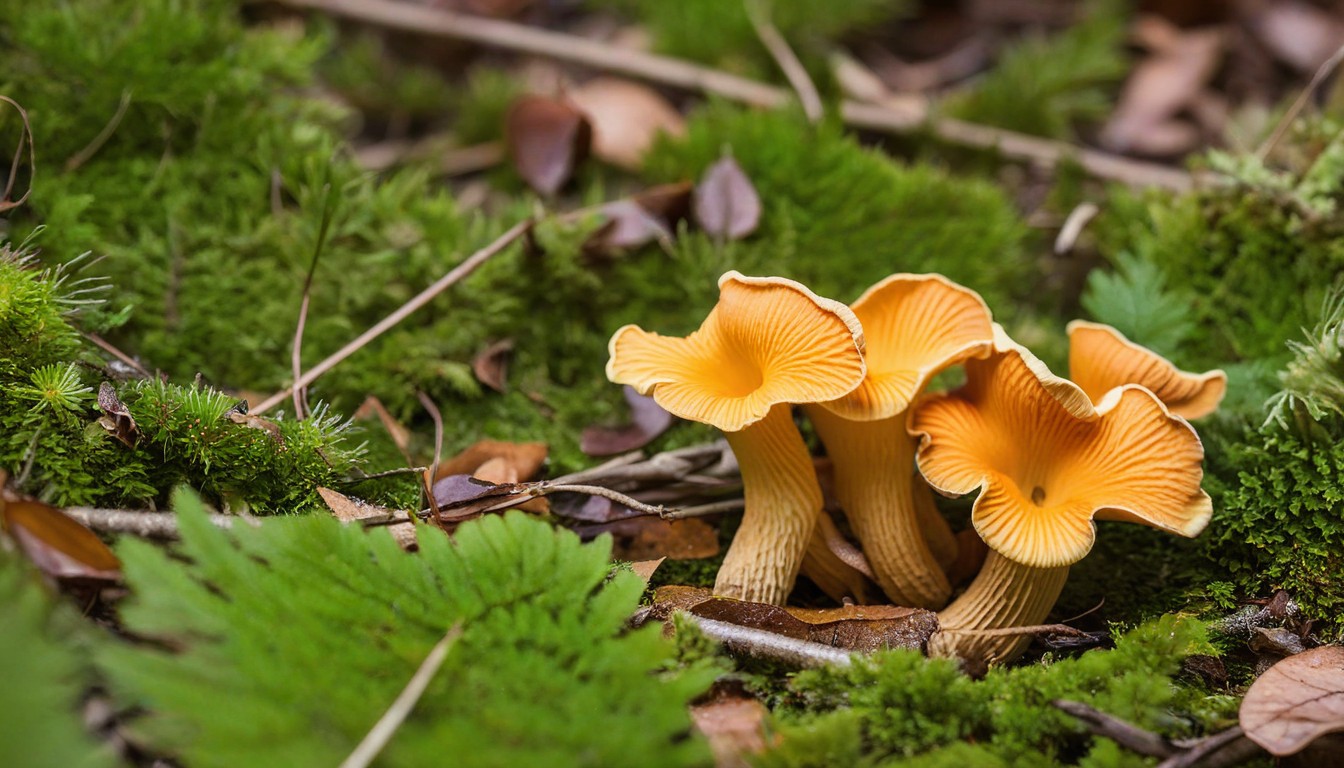
After a successful foraging trip in Montana, it’s time to cook and savor the unique flavors of Chanterelle mushrooms. There are numerous delicious ways to prepare them, and we’ve gathered some recipe ideas and cooking techniques to inspire your culinary creativity.
Simple Sautéed Chanterelles
One of the best ways to enjoy Chanterelle mushrooms is with a simple sauté. Heat some olive oil in a pan and add sliced mushrooms. Cook for a few minutes until softened, then season with salt and pepper. Serve as a side dish or add to pasta or a green salad.
Chanterelle Risotto
Risotto is a classic Italian dish that provides the perfect base for Chanterelle mushrooms. In a saucepan, sauté chopped onion in butter until softened. Add Arborio rice and cook for a few minutes until fragrant. Slowly add chicken or vegetable stock, stirring constantly until the rice is cooked. In a separate pan, sauté sliced Chanterelle mushrooms and add them to the risotto. Season with grated Parmesan cheese and parsley.
|
Ingredients |
Method |
|---|---|
|
2 tbsp olive oil |
Heat olive oil in a saucepan on medium heat |
|
1 onion, diced |
Add onion and sauté until softened and fragrant |
|
1 cup Arborio rice |
Add rice to the onion and cook for a few minutes until rice is fragrant |
|
4 cups chicken or vegetable stock |
Slowly add stock to the rice mixture, stirring constantly until the rice is cooked and the mixture is creamy |
|
1 cup sliced Chanterelle mushrooms |
In a separate pan, sauté mushrooms until softened and add to the risotto |
|
½ cup grated Parmesan cheese |
Stir in Parmesan cheese and parsley, season with salt and pepper to taste and serve hot |
Chanterelle and Gruyere Tart
A savory tart is a delightful way to showcase Chanterelle mushrooms. Roll out some puff pastry and line a tart tin. In a bowl, mix together sliced mushrooms, grated Gruyere cheese, and chopped thyme. Spread the mixture into the pastry case, then bake in a preheated oven for 25-30 minutes until golden and cooked through.
Grilled Chanterelle Mushrooms
Chanterelle mushrooms can also be enjoyed on the grill. Clean and pat dry the mushrooms, then toss with olive oil and chopped garlic. Grill over medium-high heat for 3-4 minutes on each side until slightly charred. Serve with grilled meat or fish for a delicious summertime main course.
Whatever cooking method you choose, Chanterelle mushrooms are a versatile and tasty ingredient that are sure to impress your taste buds. Enjoy!
Conclusion
Foraging Chanterelle mushrooms in Montana can be an exciting and fulfilling experience. By following our foraging tips and exploring the best spots we’ve highlighted, you can increase your chances of a successful harvest while respecting the environment.
Remember to identify and harvest Chanterelle mushrooms responsibly, preserving their population for future foragers. Cleaning and storing them correctly will ensure they remain fresh and delicious for later use.
From sautéing to grilling, there is no shortage of creative ways to cook and enjoy Chanterelle mushrooms. Their unique flavor and nutritional benefits make them a sought-after delicacy among food enthusiasts.
So, whether you’re a seasoned forager or a beginner, grab your tools and head out into Montana’s wilderness to discover the elusive and delicious Chanterelle mushroom. Happy hunting!
FAQ
What are Chanterelle mushrooms?
Chanterelle mushrooms are highly prized wild mushrooms known for their vibrant golden color and distinctive trumpet-like shape. They have a delicate fruity aroma and a slightly peppery flavor, making them a favorite among chefs and mushroom enthusiasts.
Where can I find Chanterelle mushrooms in Montana?
Chanterelle mushrooms can be found in various locations across Montana, particularly in moist and wooded areas. Look for them in forests, near streams, and in the vicinity of coniferous trees such as Douglas firs and spruces.
When is the best time to forage Chanterelle mushrooms in Montana?
The prime time to forage Chanterelle mushrooms in Montana is usually from late summer to early fall, typically between July and September. However, the exact timing can vary depending on weather conditions and the local climate.
How can I identify Chanterelle mushrooms?
Chanterelle mushrooms can be identified by their distinctive features. They have a vase-shaped cap with wavy, ridged edges and a deep golden to orange color. The cap is attached to a thick, fleshy stem, and the underside of the cap is smooth or slightly veined.
What are some lookalikes to avoid when foraging Chanterelle mushrooms?
While Chanterelle mushrooms are generally easy to distinguish, there are a few lookalike species to be aware of. False Chanterelles, which have a similar appearance but lack the distinct fruity aroma, and Jack-O-Lantern mushrooms, which have a more vibrant orange color, should be avoided as they are not edible.
What tools do I need for Chanterelle mushroom foraging?
When foraging for Chanterelle mushrooms, it’s essential to have a few basic tools. These include a small, sharp knife for harvesting, a basket or cloth bag for collecting the mushrooms, and a soft-bristled brush for cleaning off any dirt or debris.
How should I responsibly harvest Chanterelle mushrooms?
To ensure the sustainability of Chanterelle mushrooms, it’s crucial to harvest them responsibly. Only take what you need, leaving some behind to allow the mushrooms to distribute spores and continue their growth. Avoid damaging the surrounding vegetation and be mindful of the delicate ecosystems where they thrive.
How should I clean and store Chanterelle mushrooms?
To clean Chanterelle mushrooms, gently brush off any dirt or debris with a soft-bristled brush. Avoid washing them as they can absorb water and become mushy. Store the mushrooms in a breathable container, such as a paper bag or a loosely covered container, in the refrigerator for up to a week.
What are some delicious ways to cook Chanterelle mushrooms?
Chanterelle mushrooms are incredibly versatile and can be used in various dishes. Saute them in butter with garlic and herbs for a simple side dish, incorporate them into pasta or risotto, or add them to creamy soups and sauces for a burst of flavor. They also pair well with poultry, seafood, and eggs.
Are Chanterelle mushrooms safe to eat?
Yes, Chanterelle mushrooms are generally safe to eat when properly identified and cooked. However, it’s essential to be cautious when foraging for mushrooms, as there are poisonous lookalike species in the wild. If you are unsure about the identification of a mushroom, consult with an experienced forager or mycologist before eating it.

